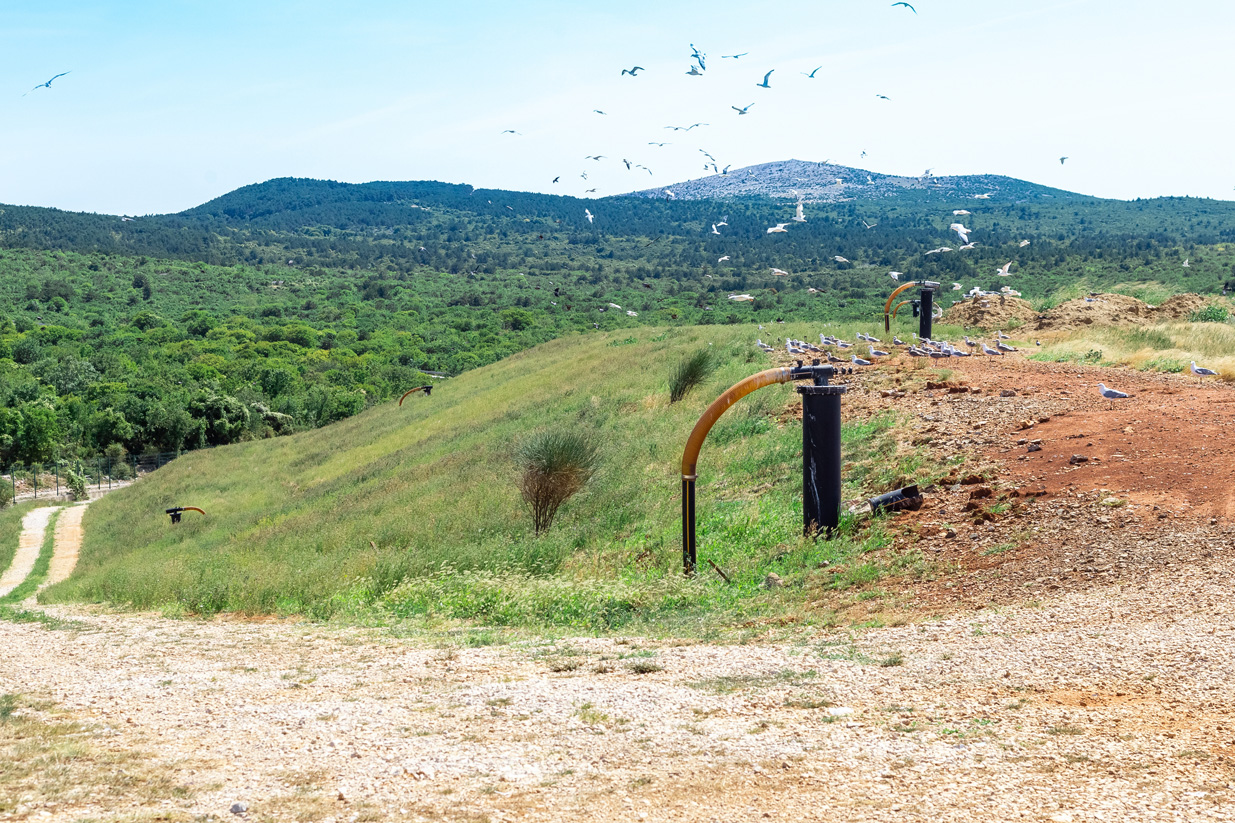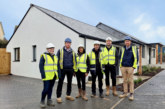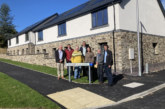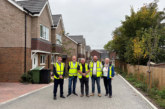 Local authorities are commonly asset rich yet cash poor. However, if they look in the right places, many have an opportunity to turn liabilities and dead space into true assets that achieve their financial and environmental goals. The key is how to unlock this opportunity without breaking the bank. Dave Garner, Senior Associate Sustainability Consultant at Stantec, looks at the potential avenues for traditionally wasted public sector land and how to garner support which unlocks private sector or even community investment.
Local authorities are commonly asset rich yet cash poor. However, if they look in the right places, many have an opportunity to turn liabilities and dead space into true assets that achieve their financial and environmental goals. The key is how to unlock this opportunity without breaking the bank. Dave Garner, Senior Associate Sustainability Consultant at Stantec, looks at the potential avenues for traditionally wasted public sector land and how to garner support which unlocks private sector or even community investment.
Local authorities are in a predicament — many of them are strapped for cash but also have an enviable asset portfolio. So, how can they invest in their fixed assets while battling against a constrained budget as well as varied pressures from across the environmental, social, and economic spectrum?
As it has often been said, the solution is not to try the same thing over and over and hope for a different outcome. Local authorities must look at new ways to identify the most promising opportunities and actively invest in them.
Let’s look at how local authorities can do this. My specific focus is on three key areas, which benefit councils economically, while delivering environmental and social objectives as well as adopted targets.
These are:
1. The types of opportunities that can be promoted
2. Private investment options for public assets
3. Reducing investment risk for all through a different business model for investment.

Sustainable opportunities
Councils have a wide range of fixed assets including property, car parks, vacant land, former landfills, infrastructure assets like roads and bridges, vehicles, plant and machinery, and also IT hardware. These provide opportunities to deliver operational savings or even revenue generation. However, the council will often have a limited budget for any capital investment. For these opportunities, the focus must be on those that deliver societal and sustainability goals, that is they deliver economic, social and environmental benefits.
The investments could be in achieving efficiency gains through actions, such as improving the fabric of public buildings to reduce energy consumption, or they could be for revenue generation through installation of renewable energy technologies like solar panels. The types of opportunities that should be considered will be specific to the drivers for each council and the available assets for investment. As such, there is potential that a rapid analysis of key assets could be undertaken to highlight the opportunities available, advantages and disadvantages.
By investing in local assets to deliver sustainability goals, councils can see a suite of potential benefits, including:
- Job creation (construction and operation)
- Renewable energy generation
- Carbon insetting
- Greater energy security
- Improved user experience
- Opening opportunities for other activities
- Visible action for the community
- Asset value increases
- Economic benefits
- Biodiversity gains
- Potential development of associated services
 For example installing solar panels on a former landfill site can often prove to be a good investment. This move helps councils deliver the electricity generated to nearby operations, such as maintenance or waste depots, which are in the process of electrifying fleet vehicles.
For example installing solar panels on a former landfill site can often prove to be a good investment. This move helps councils deliver the electricity generated to nearby operations, such as maintenance or waste depots, which are in the process of electrifying fleet vehicles.
In addition, the council’s electric vehicles can potentially be used as battery storage when they are not in use, generating further revenue, while retaining valuable land.
Investigation into the potential for the installation of this type of infrastructure should also consider other additional services that could be installed to further economic, social or environmental benefit for the council. Examples of services could be charging stations, retail opportunities, and biodiversity net gain or activity promotion.
At Stantec, we’re currently working with a council to seek planning permission for a former landfill site to have solar panels placed on the cap. This is then being colocated with electric vehicle charging infrastructure and a café.
Once complete, this project will turn a net liability for the council into a revenue-generating asset. The scheme will create local electricity; provide the community with both a café and electric car charging capacity, while also creating local jobs in the construction and operation of the developments.
Corporate or Community?
The concept of developing public sector assets using private investment isn’t new, but the main examples of implementation are through PFI and PPP projects for large developments.
So, why has there been limited investment in medium sized projects that deliver on a council’s objectives? Furthermore, why has this focussed on service delivery and not on alternative revenue generation or cost reduction opportunities?
Traditionally, when we talk about private investment, this has been from the corporate world. We are, though, seeing a trend emerge in community wealth building (CWB) — a people-centred method for local investment that seeks to enable local communities and people to invest in, access and benefit from local projects.
CWB is effectively local crowd funding for projects that deliver benefits aligning with investors’ aims. It provides a method for enabling people to influence their communities and impact on what is important to them, be it environmental, social or economic improvement.
It also provides a mechanism for everyday people to invest smaller sums of money into large projects and to receive a desired return on investment. For example, a person may invest £500 and receive £25/year return at 5% ROI that is significantly better than many current bank interest rates, while other investment options generally require significantly more capital.
CWB can, in the right conditions, provide the potential for local authorities to allow community management of the infrastructure to generate further wealth, employment and the upskilling of local people.
A different business model?
Risk is quite often a major inhibitor to investment — the perceived risk to the council for the investment to be forthcoming, the risk around community support, and also the risk from the investors around their returns. Although it should be noted that community investors are likely to have different aspirations to corporate investors, with the former often being satisfied with lower financial reward in return for greater social return.
The reality is that it is currently less risky to invest in a green field for a solar farm or battery storage than it is to invest on a car park or a landfill. This is a shame as the car park is likely to be in an urban environment where the energy is needed, while the former landfill will often already have a connection into the grid from their landfill gas turbines, which will become redundant over time, and the land is unproductive.

Thinking more about risk
How can a local authority change the current risk assessment to promote development of their assets? Is it time to think of a new model for collaboration between the community/private investors and the public sector?
Investment will normally occur where there is an opportunity to receive a favourable return, with an acceptable amount of risk. At the same time, the asset owner will always seek to receive a fair return from their asset, with an acceptable amount of risk.
As the asset owner, the council can look to lease the rights to using their underutilised assets to investors with a peppercorn rent for a 20-year duration, or whatever length is deemed appropriate.
The investor then has less capital tied up in the land, releasing funds for investment in the infrastructure. To further incentivise the investor, the council can seek to undertake a Power Purchase Agreement (PPA) with the investor once the facility is up and running. This is a long-term contract between purchasers and the producers of renewable energy, which has mutual benefits. The fixed-price makes for a win-win situation as users can budget more efficiently, and investors can forecast revenue more clearly.
A similar system could be used for investment in biodiversity or nutrient neutrality, which can then be promoted for developments within the Council boundary. In this model, the investor has reduced risk through low land capital cost and confidence in the revenue return for the system installed. While the council has the benefit of energy price certainty in addition to the advantages identified above, while having minimal capital investment in the infrastructure.
The PPA agreement could also seek to include a local community benefit clause where a percentage of the profit from the installation is allocated to a local community fund that invests in the people that live and work nearby.
For the council to achieve the best outcomes from the collaboration with an investor, it is recommended they undertake an initial scoping study of their available assets and identify the best opportunities. This could be done across a range of council assets to find the best locations for investment. For example, where there is the right mix of grid connection, nearby demand, available land and somewhere which won’t have too much of a visual impact if changed.
Councils may also want to consider creating greater certainty for investors through adoption in their local plan for sites identified as most viable for development.
This model will support councils in reducing the cost of their energy and achieving their climate change objectives, through the provision of local renewable energy. With over 70% of councils having declared a climate emergency, decarbonisation of energy will become a key requirement to achieving net zero aspirations.
If you would like to know more about Stantec and its holistic range of design, engineering and environmental services, visit www.stantec.com/uk.
In January Stantec shared news that it had supported local authorities across the UK in successfully bidding for more than £71.5m worth of levelling up funding. More on that story here.










